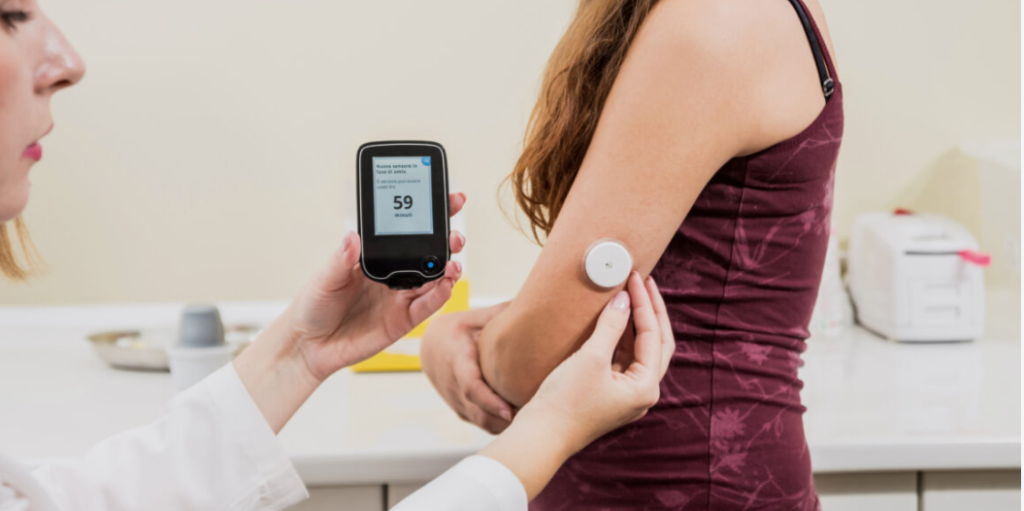Diabetes can appear in almost anyone: pregnant women, infants, children, adolescents, young adults and the elderly.
But researchers at Stanford University School of Medicine (Stanford medicine) say the disease, whose various forms affect the way the body handles blood sugar, can manifest itself very differently in hundreds of millions of patients around the world, making it a perfect fit for the personalized approach known as precision medicine.
“Traditional medicine takes a one-size-fits-all approach to treatment and diagnosis,” said Dr. Jesse Wang, a clinical psychologist in the pediatric endocrinology group at Stanford Medicine Children’s Health. “It works for some people, but not for others.” In contrast, precision medicine allows doctors to combine information about a patient’s type of diabetes with knowledge about their life to create a personalized treatment plan.
As part of a team of 200 scholars from 28 countries, Wong helped write a comprehensive report on the state of precision medicine for diabetes. The report, published in the journal Nature Medicine, along with other papers in Communications Medicine and The Lancet Diabetes & Endocrinology, summarizes everything that is known about this personalized approach. The report was sponsored by the American Diabetes Association, the European Association for the Study of Diabetes and the Novo Nordisk Foundation. Three other diabetes experts from the Stanford University School of Medicine – Dr. Anna Gloin, Dr. Corey Hood and Dr. Jennifer Iker – were also part of the team.
Wong spoke about the key takeaways from the report on precision medicine and the treatment of type 1 diabetes, which is part of a report she helped write.

What findings stand out among the type 1 diabetes treatments you reviewed?
We focused on diabetes technologies because they are at the forefront of the standard of care for type 1 diabetes management. Some of these technologies electronically connect a patient’s continuous glucose monitor, which includes a glucose sensor inserted into the skin, to an insulin pump. This technology allows for continuous monitoring of blood glucose and automatic management and adjustment of insulin doses.
It’s great to see the ongoing benefits of these glucose control technologies, such as the measurement of glycosylated hemoglobin, which can help assess a patient’s blood glucose levels over the last three months, and “time ranges,” which are the percentage of time each day that blood glucose is within a target range.
Another component of our findings – which I think is underestimated – is the positive impact of technology on people’s lives, including sleep quality and mental health. We may think of these as ancillary, but the truth is that when you have type 1 diabetes, controlling the disease affects your entire life experience.
What do the quality of life findings mean for children with type 1 diabetes and their families?
In the data for children, we found that the benefits of continuous glucose monitoring devices on blood glucose or blood sugar may vary, with the most significant benefits for older adults. Although younger children had fewer glycemic benefits, this group had many psychosocial benefits – not only for the patients, but also for their parents. Before the advent of continuous monitoring devices, parents might wake up several times a night for years to check their child’s blood sugar. With these devices, parents sleep better, suffer less pain related to diabetes management, and are in a better mood, which not only benefits them, but also makes them better caregivers for their children.
What are the gaps in our knowledge and what should precision medicine research focus on next?
No studies have directly compared different brands of the same type of diabetes device or technology. This is not a coincidence; these studies were conducted by device manufacturers with their own interests. But such studies are necessary. Without face-to-face comparisons, it’s hard to say to an individual patient, “Based on these factors in your life, this device is better for you.”
Few studies have evaluated whether there are subgroups of patients who have more difficulty accessing diabetes technology, or the extent to which the healthcare team provides “technical support” for device use. These factors can greatly influence someone’s success in starting the technology or continuing to use it.
We also see a need for more research to understand how these technologies work or don’t work for patients at different socioeconomic levels and across all races and ethnicities. Many of the existing study samples consisted of non-Hispanic white patients of higher socioeconomic status.
The whole idea behind precision medicine is that taking these factors into account should improve equity in diabetes care and medicine in general. But we need more studies that follow large, diverse samples of patients so we can find relationships between their individual characteristics and outcomes.
If a child or parent with diabetes asked you what this report means for their family, how would you answer them?
We always say that diabetes care is an art, not a science, because no one goes through diabetes like your child or you. That’s really frustrating for people with diabetes and their parents; they want it to be a perfect equation where you substitute numbers to get the exact meaningful answer.
But precision medicine has brought diabetes treatment closer to that ideal. We’ve added more variables to the equation about who you are, your lifestyle, your genetic background – all the factors that make diabetes a part of your life. These factors add valuable information so we can make sure we treat your diabetes in the best way possible. The best approach is different for everyone; we want to make the best choice for you.
Have you ever seen the use of precision medicine in other specialties and thought, “I wish we could do that in diabetes treatment”?
It’s funny you say that because I always feel the opposite! I’ve had colleagues in other subspecialties say that they use diabetes as a role model for their implementation of precision medicine. Whether it’s integrated multidisciplinary care in the clinic, whether it includes psychosocial interventions and medical education, or whether it’s technology that we can offer our patients, diabetes has always been at the forefront of using precision medicine to help the people we care for.



